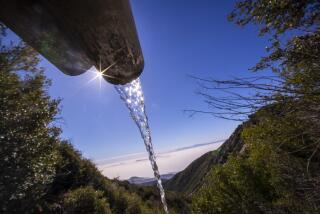Oil Firms Find Way Around Tanker Ban : Environment: Santa Barbara crude is sent to Bay Area by pipeline, then put on ships to Los Angeles. Companies deny wrongdoing but local and state authorities are investigating.
- Share via
SANTA BARBARA — Local officials thought the risk posed by oil shipping along the Southern California coast ended a year ago when they denied Chevron’s request to move oil by tanker from the Point Arguello offshore project.
Santa Barbara County supervisors and the California Coastal Commission, which upheld the supervisors’ decision, wanted the oil transported to Los Angeles by overland pipeline, which they consider environmentally safer than tankers.
But in a move that angered county officials and Coastal Commission members, Chevron and Texaco began early this month to tanker the oil anyway through a circuitous route--by pipeline from the Santa Barbara region to the San Francisco Bay Area, then south along the coast by ship to refineries in Los Angeles.
Both the Coastal Commission and Santa Barbara County are investigating the legality of the oil companies’ action.
Some officials in Martinez, where the tankers are loaded, also are not happy about the arrangement. The ecologically sensitive San Francisco Bay and much of the California coastline face increased risk of an environmental disaster because Chevron and Texaco won’t abide by the ban, said Contra Costa County Supervisor Nancy Fahden.
“The whole thing doesn’t make sense--pipelining the oil hundreds of miles north, then shipping it hundreds of miles back down south,” Fahden said. “Now there’s more pollution and greater chance for a major oil spill.”
Santa Barbara County had ordered that the oil be moved via pipeline to Bakersfield, then transferred to another pipeline for delivery to refineries in Los Angeles. This would require blending heavy Point Arguello crude with a lighter oil to make it easier to move.
A coalition of oil companies led by Chevron has long opposed this method and last May filed a federal lawsuit against Santa Barbara County, challenging the policy against oil tankers.
Chevron spokesman G. Michael Marcy said this week that blending the lighter oil with the Point Arguello crude in order to transport it through a pipeline is “too expensive and highly impractical.” The pipeline going north is heated, which makes the oil flow without blending. That is why the company decided to begin tankering the oil from the Bay Area, a transportation method that Marcy said is neither illegal nor improper.
But county officials say several other oil companies transport crude through the pipeline that Chevron has rejected, proving that it is a reasonable alternative to tankering.
Chevron shipped a tanker loaded with 205,000 barrels of crude oil from Martinez to Los Angeles-area refineries earlier this month. In late August, Texaco shipped 130,000 barrels by the same route, said Lou Merzario, a planner for the county Energy Division. By the end of the year, the pace of shipments is expected to reach about five tanker trips a month, he said.
The Point Arguello project has been beset by controversy for years. Oil was discovered in the area in 1981, and a consortium of 18 companies, led by Chevron, invested more than $2 billion to build three offshore platforms, a marine terminal at Gaviota, onshore treatment plants and gas pipelines.
It appeared that full production would finally begin two years ago when Santa Barbara County supervisors issued a permit to allow oil tankering from the Gaviota terminal to Los Angeles refineries. But following the Exxon Valdez oil spill in Alaska, the Coastal Commission revoked that permit after an appeal by Santa Barbara environmental groups.
Chevron sued the Coastal Commission in October, 1989, and later filed a new request with the county--since rejected--for an interim tankering permit.
More to Read
Sign up for Essential California
The most important California stories and recommendations in your inbox every morning.
You may occasionally receive promotional content from the Los Angeles Times.










